
Top 10 Sunflower Oil Producing Countries

Top 10 Sunflower Oil Producing Countries
Sunflower oil, a globally celebrated vegetable oil, is prized for its light flavor, versatility in cooking, and high nutritional value. Known for its heart-healthy unsaturated fats and low cholesterol content, it has become a staple in households and food industries worldwide. The global sunflower oil market was valued at approximately $20 billion in 2023 and is expected to grow at a CAGR of 5.2%, reaching $30 billion by 2030.
Eastern Europe continues to dominate global production, with Ukraine and Russia accounting for over 50% of global output before geopolitical disruptions began impacting supply chains. Beyond these giants, countries such as Argentina, Turkey, and South Africa are making significant contributions, while India and China are rapidly expanding their domestic production to meet growing demand. Sunflower oil’s health benefits and suitability for frying, baking, and raw consumption have fueled its popularity in both developed and emerging markets.
The industry is undergoing notable transformations, from the adoption of sustainable farming practices to the premiumization of sunflower oils with high-oleic and cold-pressed varieties. This article highlights the Top 10 Sunflower Oil Producing Countries, their contributions to the global market, and the evolving trends and challenges shaping the industry.

- Ukraine
- Annual Production: Over 5.6 million metric tons
- Why It Stands Out: Ukraine is the world’s largest producer of sunflower oil, contributing more than 30% of global output. The country’s Black Sea region is renowned for its fertile soil and high-quality sunflowers.
- Key Innovations: Focus on high-yield sunflower varieties and sustainable farming techniques.
- Russia
- Annual Production: Approximately 4.8 million metric tons
- Why It Stands Out: Russia is a close second in global sunflower oil production, with a significant export market in Europe and Asia.
- Key Innovations: Expansion of mechanized farming and investment in oil refining technologies.
- Argentina
- Annual Production: Around 1.1 million metric tons
- Why It Stands Out: As the leading producer in South America, Argentina is known for its high-quality sunflower oil exports, primarily to North America and Europe.
- Key Innovations: Introduction of drought-resistant sunflower hybrids and efficient irrigation systems.
- Turkey
- Annual Production: Over 900,000 metric tons
- Why It Stands Out: Turkey is a significant producer and consumer of sunflower oil, benefiting from its strategic location for exports to Europe, the Middle East, and Asia.
- Key Innovations: Implementation of precision agriculture and solar-powered oil extraction facilities.
- European Union (Collective Production)
- Annual Production: Approximately 800,000 metric tons
- Why It Stands Out: Countries like Romania, Bulgaria, and Hungary contribute significantly to sunflower oil production in the EU, catering to the region’s high demand for vegetable oils.
- Key Innovations: Integration of advanced milling technology and strict adherence to sustainability standards.
- India
- Annual Production: Around 650,000 metric tons
- Why It Stands Out: India is a growing producer and a major consumer of sunflower oil, with increasing imports from Ukraine and Russia to meet domestic demand.
- Key Innovations: Development of high-oil-yield sunflower seeds tailored to local climates.
- China
- Annual Production: Over 500,000 metric tons
- Why It Stands Out: China is expanding its sunflower oil production to reduce reliance on imports, driven by growing domestic demand for healthy cooking oils.
- Key Innovations: Investments in modern oil extraction facilities and research into high-efficiency sunflower strains.
- South Africa
- Annual Production: Approximately 450,000 metric tons
- Why It Stands Out: South Africa is the largest sunflower oil producer in Africa, with a robust domestic market and growing exports to neighboring countries.
- Key Innovations: Adoption of agroforestry practices and local processing initiatives to add value to sunflower seeds.
- Kazakhstan
- Annual Production: Around 400,000 metric tons
- Why It Stands Out: Kazakhstan is a rising player in sunflower oil production, exporting to Central Asia and parts of Europe.
- Key Innovations: Use of sustainable farming techniques and government incentives for expanding cultivation.
- United States
- Annual Production: Over 300,000 metric tons
- Why It Stands Out: The U.S. primarily produces sunflower oil in the Midwest, focusing on premium and high-oleic varieties for health-conscious consumers.
- Key Innovations: Emphasis on non-GMO and organic sunflower oils for niche markets.
Major Trends in the Sunflower Oil Industry
- Rising Demand for Healthier Cooking Oils
Consumers are increasingly turning to healthier cooking oils, and sunflower oil is at the forefront due to its high levels of vitamin E, unsaturated fats, and omega-6 fatty acids. High-oleic sunflower oil, with its extended shelf life and heart-health benefits, is particularly popular, commanding a growing share of the market.
- Growth in Emerging Markets
The demand for sunflower oil is rising in emerging markets across Asia and Africa, fueled by urbanization, rising disposable incomes, and shifting dietary preferences. Imports to these regions are growing at a CAGR of 6.5%, making them critical growth drivers for the industry.
- Sustainability and Eco-Friendly Production
Sustainability is a growing focus for producers as consumers and regulators demand environmentally responsible practices. Farmers are adopting water-efficient irrigation, renewable energy-powered processing, and regenerative agricultural techniques to minimize their environmental footprint.
- Premiumization of Sunflower Oil
The market for high-value products, such as cold-pressed and organic sunflower oil, is expanding rapidly. These oils cater to health-conscious and gourmet consumers, particularly in North America and Europe, where demand for premium edible oils is growing.
- Expansion of Non-Food Applications
Sunflower oil’s use is expanding into non-food industries, including cosmetics, biofuels, and pharmaceuticals. This diversification is creating new revenue streams and driving innovation in product formulations and marketing strategies.
- E-Commerce and Direct-to-Consumer Growth
The rise of e-commerce has transformed how sunflower oil is marketed and sold. Online platforms are enabling producers to connect directly with consumers, while subscription services and digital marketplaces are driving accessibility and convenience.

Main Challenges in the Sunflower Oil Industry
- Geopolitical Disruptions
The conflict in Eastern Europe has significantly disrupted the global sunflower oil supply, causing shortages and price volatility. Ukraine and Russia, which accounted for more than 50% of global production, have seen their exports impacted by trade restrictions and infrastructure damage.
- Climate Change
Sunflowers are sensitive to climate variations, and extreme weather events, including droughts, floods, and heatwaves, are reducing yields in major producing regions. Producers are investing in resilient crop varieties and adaptive farming practices to counter these challenges.
- Price Volatility
Global sunflower oil prices have been highly volatile due to fluctuating production, geopolitical tensions, and supply chain disruptions. This volatility affects both producers, who face rising input costs, and consumers, particularly in price-sensitive emerging markets.
- Competition from Alternative Vegetable Oils
Sunflower oil competes with cheaper alternatives like palm, soybean, and canola oil. While sunflower oil is often seen as a healthier choice, its higher cost can limit its adoption in budget-conscious markets.
- Counterfeit and Adulterated Products
The rise of counterfeit sunflower oil in global markets undermines consumer trust and brand reputation. Producers are adopting traceability systems, such as blockchain technology, to combat fraud and ensure product authenticity.
- Balancing Sustainability with Cost
While sustainable farming practices are crucial, they often come with higher production costs. Striking a balance between environmental responsibility and affordability remains a challenge for producers seeking to compete in global markets.
- Infrastructure and Logistics Challenges
In emerging markets, inadequate infrastructure and inefficient logistics systems can hinder the timely transportation of sunflower oil to domestic and international markets, impacting profitability and competitiveness.
The Top 10 Sunflower Oil Producing Countries exemplify the diversity and innovation driving the industry’s growth. From Ukraine’s dominance in global production to Argentina’s expansion in South America and South Africa’s leadership in Africa, these nations are setting the standard for quality and sustainability in sunflower oil production.
Platforms like uFoodin are becoming increasingly important for sunflower oil producers. For small and medium-sized enterprises, uFoodin offers an unparalleled opportunity to connect with global distributors, build partnerships, and showcase their commitment to premium quality and sustainable practices. Established players can leverage the platform to enhance their supply chain efficiency, strengthen relationships with international buyers, and explore new markets.
The future of sunflower oil hinges on the industry’s ability to navigate challenges like climate change and geopolitical disruptions while capitalizing on trends such as premiumization, sustainability, and the expansion of non-food applications. By embracing innovation, fostering global collaboration, and maintaining a commitment to quality, sunflower oil producers can ensure their place in an increasingly health-conscious and environmentally aware global market.
uFoodin Editorial Team
Bibliography
- Statista: Global Sunflower Oil Market Overview
- FAO (Food and Agriculture Organization): Sunflower Oil Production Reports
- International Food Policy Research Institute (IFPRI): Trends in Vegetable Oil Markets
- Company Reports and Case Studies: Leading Sunflower Oil Producers
LAST ARTICLES
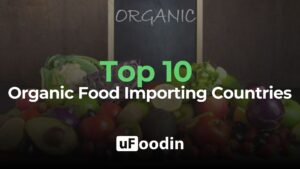
Top 10 Organic Food Importing Countries
The organic food market has witnessed explosive growth over the last decade, driven by increasing consumer awareness about health, sustainability, and ethical sourcing. Valued at

Top 10 Alcohol-Free Beverage Importing Countries
The alcohol-free beverage market has emerged as a global phenomenon, driven by health-conscious consumers, shifting cultural norms, and evolving preferences for diverse drink options. Valued
FEATURED OFFERS
Related Posts

Top 10 Organic Food Importing Countries
The organic food market has witnessed explosive growth over the last decade, driven by increasing consumer awareness about health, sustainability, and ethical sourcing. Valued at

Top 10 Alcohol-Free Beverage Importing Countries
The alcohol-free beverage market has emerged as a global phenomenon, driven by health-conscious consumers, shifting cultural norms, and evolving preferences for diverse drink options. Valued

Top 10 Canned Food Importing Countries
Canned food plays a pivotal role in the global food industry, providing essential solutions for food preservation, convenience, and affordability. With a market valued at

Top 10 Vegetable Importing Countries
Vegetables are an integral part of global trade, supporting both essential nutrition and diverse culinary traditions. In 2023, the global vegetable import market was valued

Top 10 Fruit Importing Countries
Fruits are an essential part of global trade, reflecting both cultural preferences and economic opportunities. In 2023, the global fruit import market was valued at

Top 10 Seafood Importing Countries
Seafood remains one of the most traded commodities globally, with annual trade exceeding $160 billion in 2023. The Top 10 seafood-importing countries account for over

Functional Always active
Preferences
Statistics
Marketing

Functional Always active
Preferences
Statistics
Marketing
Report
There was a problem reporting this post.
Block Member?
Please confirm you want to block this member.
You will no longer be able to:
- See blocked member's posts
- Mention this member in posts
- Invite this member to groups
- Message this member
- Add this member as a connection
Please note: This action will also remove this member from your connections and send a report to the site admin. Please allow a few minutes for this process to complete.


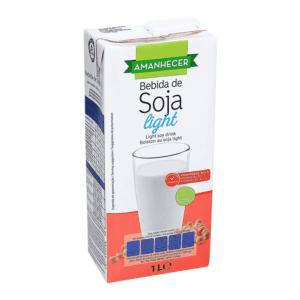


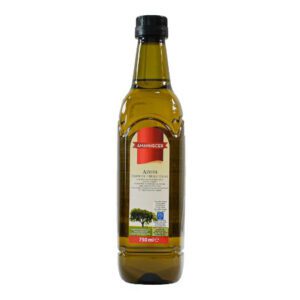





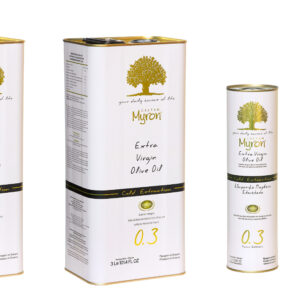





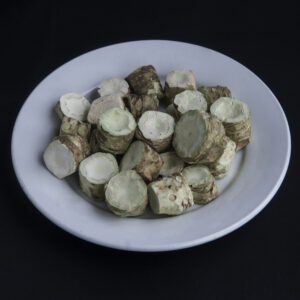


Responses